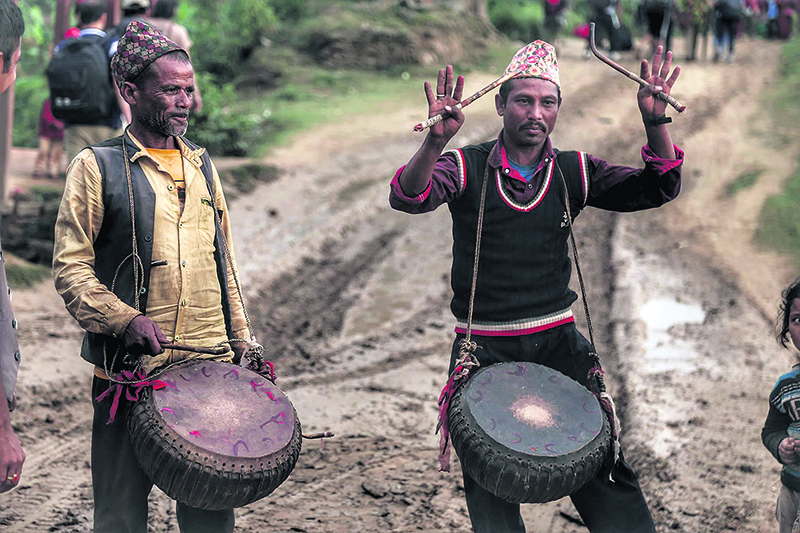
The Central Department of Nepalese History, Culture and Archaeology (NeHCA), Tribhuvan University (TU) had recently organized a five-day educational tour to Surkhet and Dailekh for the students studying in III rd semester in NeHCA.
According to our teacher Dr Madan K Rimal, we were the first set of students to have gotten the opportunity to tour the mid-western region of Nepal. Our tour began on June 5. I was excited and proud to be in the team. Our first destination was Surkhet. We reached there after a long drive of 18 hours from Kathmandu. First we visited Dailekh Bazar and Kotila Temple to learn about its historical importance.
While moving up from Dailekh Bazar to Kotila Temple, I noticed two people were shaking their bodies and chanting. Later, I realized that they were Jhankris—shamans. I thought it was a perfect view of the incredible cultures of Nepal.
We also learned that the Kotila Temple got its name as Kotila is another name of Lord Shiva. Moreover, it is also known as the temple of ‘Kotilingeshwor’.
On the next day, we started our actual exploration of archeological sites. We went to Bilaspur also called Belaspur, Dullu where our team was led by Narayan Regmi, the Ward Chief of Dullu.
Historically, Bilaspur was a resting place of then King Malay Bumma as the name itself suggests bilas, meaning luxury and pleasure. We were informed that it was a fort. I also saw brick structures, but couldn’t say if it is a ruin of fort or something else. One has to climb up a small hill to get to Bilaspur, which is absolutely a nice hiking experience with a panoramic view of hills in Dailekh.
The next promising site was Dewals, a group of temples. There were a group of temples with their own peculiar style and unlike the ones in Kathmandu. I expected sculptures inside the temple, but they were missing. We were informed that some scholars believed that the Dewals are memorial of kings, while others believed that the temples belonged to the Masto culture and sculptures are not used in Masto culture.
Then we headed toward to Gadi or Kot (fort) situated in Dailekh Bazar. It was a wide, spacious and unique site, which is supposed to be built during 17th-18th century. After that, we went to Dailekh Administration Office to see copper plate and sculpture found in the region.
I was fascinated by not only the cultural beauty but also natural splendor of the place. We went to Navisthan, which is believed to be the place where the navel of Goddess Sati fell. After that we went to Sirasthan, meaning head belonging to god. Inside the Jwala Temple, flame of natural gas and sculptures of deities were displayed. Many sculptures and broken pieces of carved stones were nearby the temple.
Another site was Panchadewal, group of five temples at Ravat Kot. Temples stands on platform and central temple standing higher as to show the main temple among five. It seems well protected by the Panchadewal School built nearby the site.
After Panchadewal, we went to explore the Dhuleswara Temple located on the top of the hill. We reached there after a short hike. We observed the sculptures of tiger, humped bull and carved design of Amalaka disc, which are said to be the remains of an old temple structure.
Our long day of exploration finished after reaching Dullu. On June 8, we went to explore the Dullu Stone Pillar inscription known as Kirtikhamba built by Prithvi Malla during the 13th Century. The inscription informed that there are two genealogical lists—Pala and Malla—rulers of medieval period. Along with the inscription, we also witnessed other pillars and ruined structure of Dullu fortified palace.
We also visited Pather Nauli, which used to be an important reservoir during medieval period. The inscription above the entrance door gave the impression that people in those times were intelligent and thoughtful even in the absence of modern day technology.
Tenzin is a MA third semester student at Tribhuvan University.
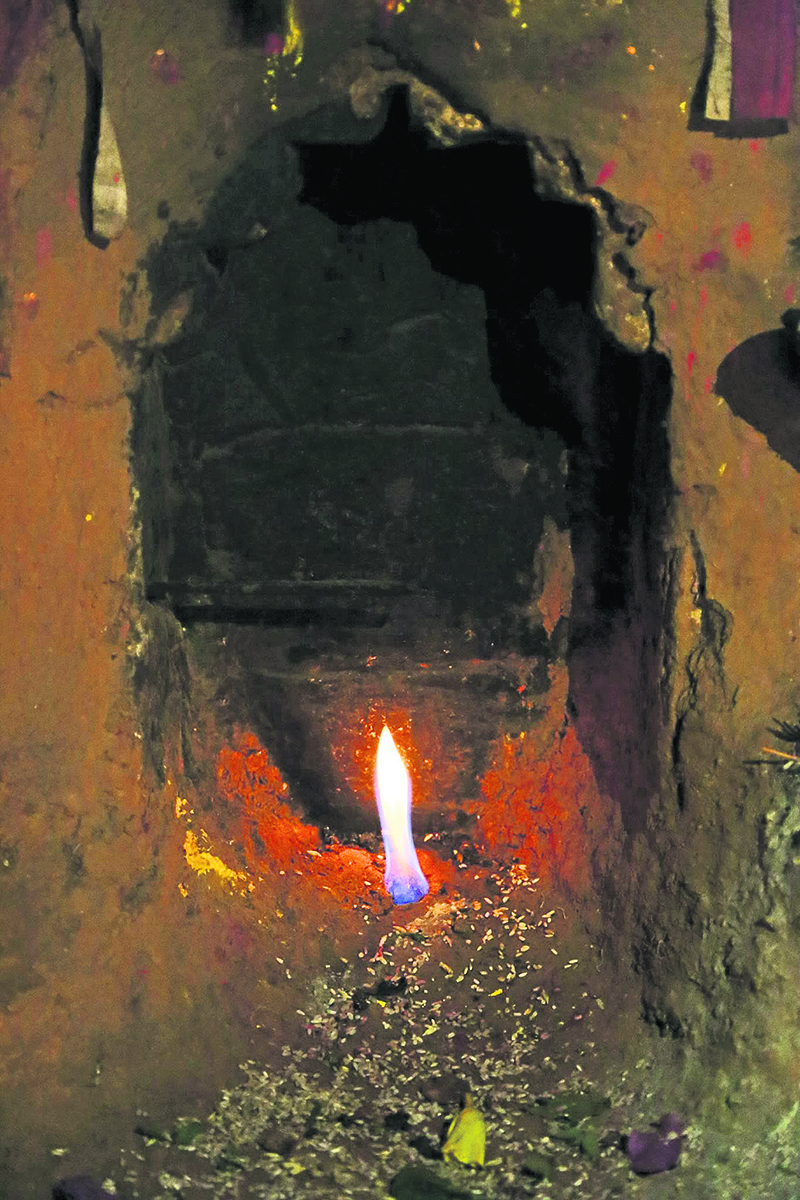
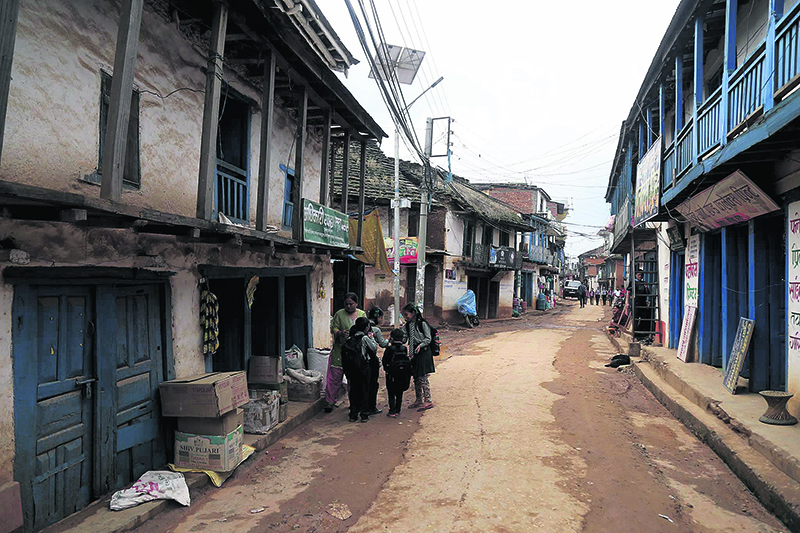
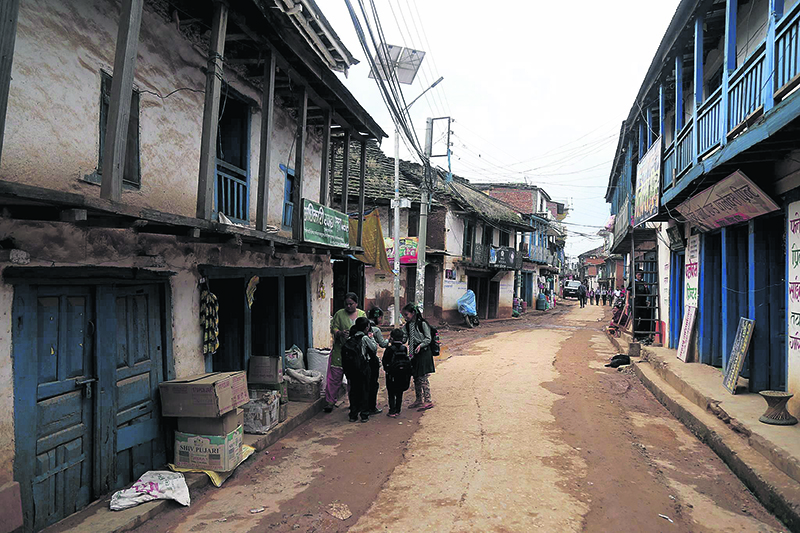
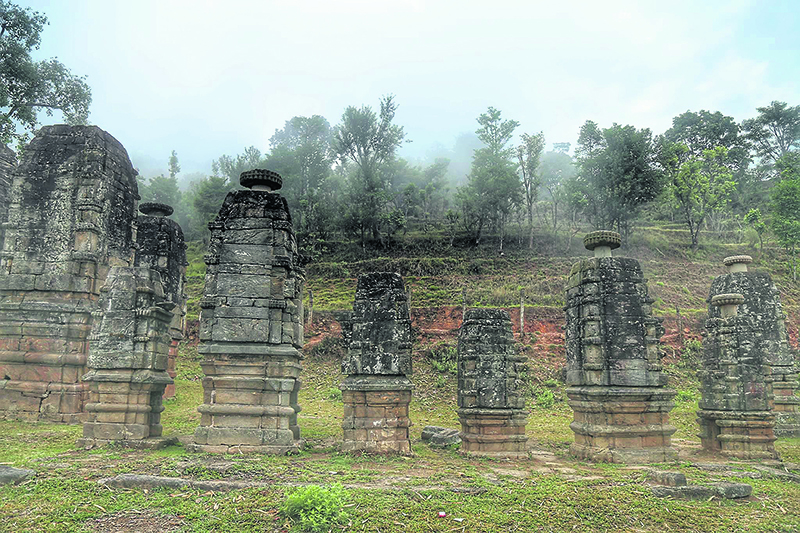


Leave A Comment